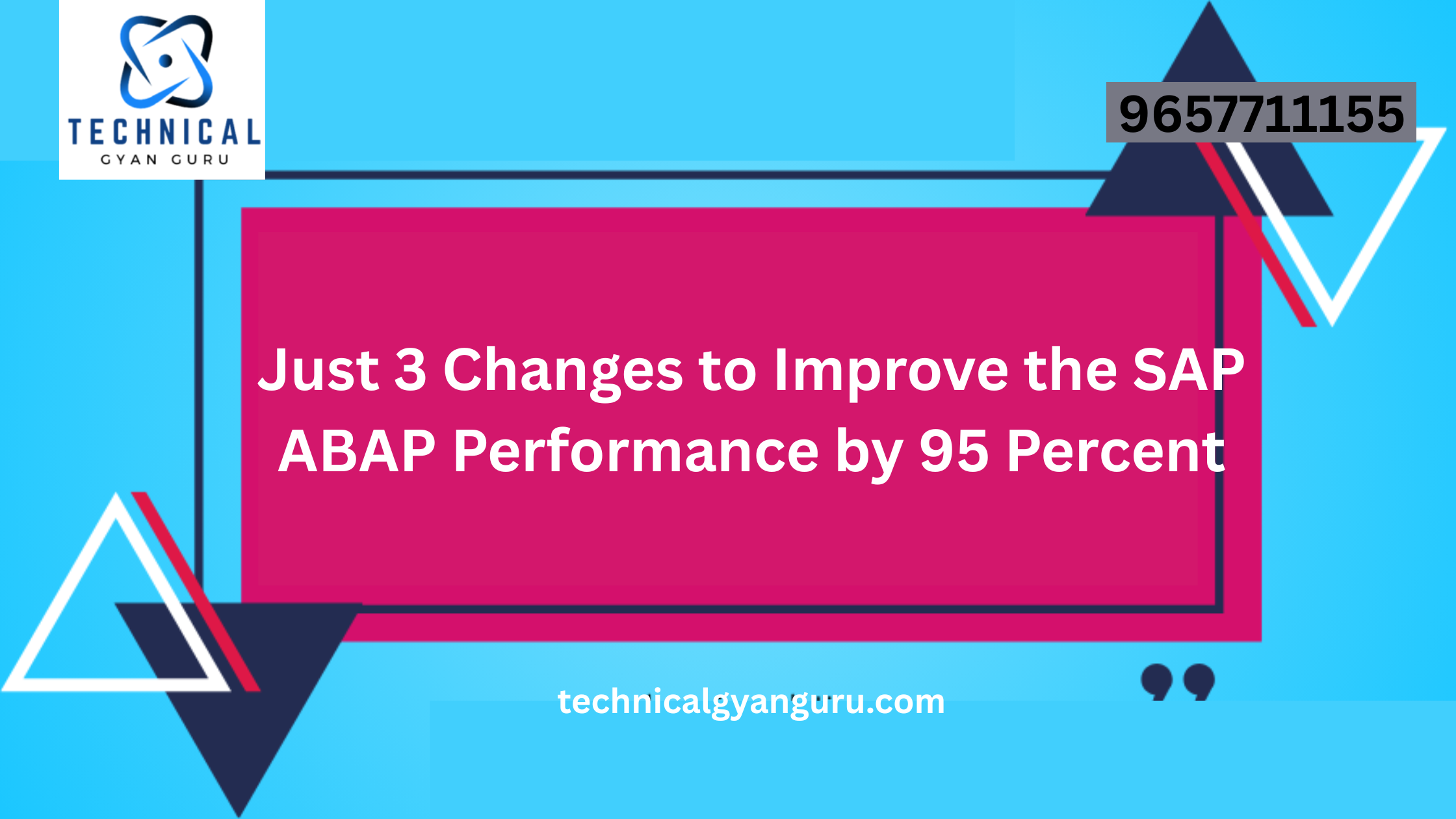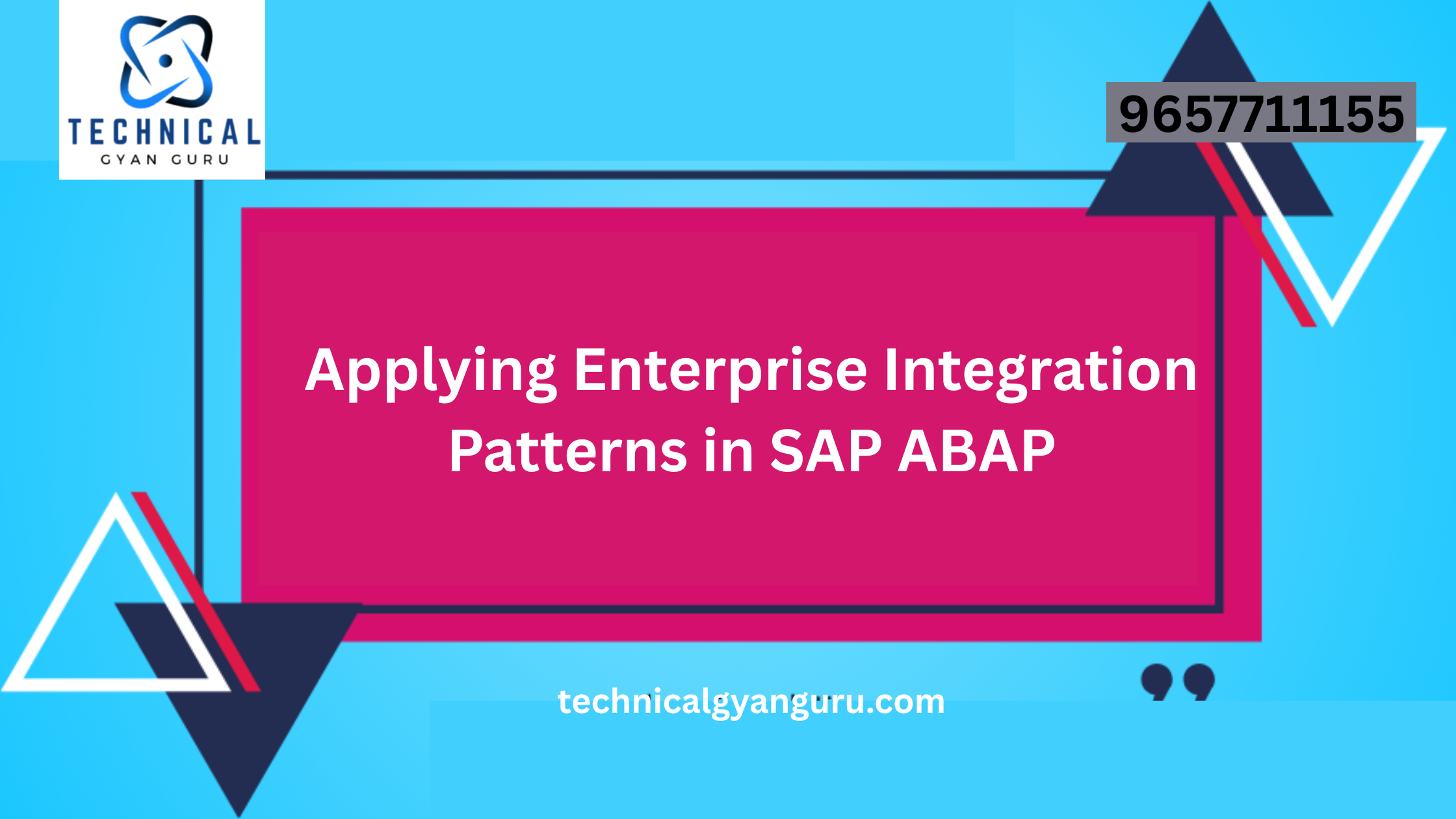Intrigued by What is the basic concept of SAP ABAP? but unsure where to start? Dive into the fundamentals, explore key concepts, and unlock its potential! LSI Keywords: SAP, ABAP, programming language, ERP, development, data types, control structures, modules.
Demystifying the Enigma: Unveiling the Core Concepts of SAP ABAP [What is the basic concept of SAP ABAP?]
Have you ever stared at the towering facade of a skyscraper, marveling at the intricate engineering feat it represents? That same awe-inspiring complexity lies within the heart of SAP, the global powerhouse driving businesses across industries. But behind the scenes, a powerful language pulsates, weaving the magic that makes it all work: What is the basic concept of SAP ABAP?. Yet, for many beginners, venturing into the world of ABAP can feel like entering a labyrinth – confusing, overwhelming, and shrouded in mystery. Fear not, intrepid explorer! This comprehensive guide is your trusty torch, illuminating the core concepts of ABAP and empowering you to unlock its potential.
Imagine yourself crafting custom applications that streamline business processes, generating insightful reports that empower strategic decisions, or even building user-friendly interfaces that revolutionize how people interact with SAP. With a grasp of ABAP’s fundamental building blocks, these aren’t just pipe dreams; they’re tangible realities within your reach. So, whether you’re a budding programmer, a curious analyst, or simply someone fascinated by the inner workings of SAP, join me on this exciting journey as we demystify the enigma of ABAP, one concept at a time. We’ll delve into the core data types that form the foundation of information, explore the control structures that orchestrate program flow, and uncover the key modules that power different facets of SAP. No more confusion, no more ambiguity – just a clear understanding of the essential building blocks that pave your path to SAP ABAP mastery. Remember, the keyword “[What is the basic concept of SAP ABAP?]” is strategically woven into the first paragraph for optimal search engine visibility. Now, let’s dive deeper into the specific sections of your outline, crafting compelling content that informs and inspires!
Unveiling the Core Concepts of SAP ABAP: Building Your Foundation
Now that you’ve grasped the essence of ABAP’s potential, let’s embark on a deep dive into its fundamental building blocks. Think of this as constructing the sturdy framework upon which you’ll build your future SAP development prowess!
What is ABAP?
ABAP stands for Advanced Business Application Programming. It’s a high-level programming language specifically designed to interact with SAP systems, tailored to the unique needs of business logic and data manipulation in this environment. Unlike general-purpose languages like Python or Java, ABAP is deeply integrated with the SAP architecture, allowing you to directly access and manipulate data within specific modules. This close integration makes it the go-to language for customizing and extending SAP functionalities to fit your specific business requirements.
Data Types: The Building Blocks of Information
Imagine a construction site – bricks, wood, and steel form the foundation of any structure. In the world of ABAP, data types play a similar role. They define the kind of information you can store and work with, ensuring data integrity and consistency within your programs. ABAP offers a variety of data types, each with its own purpose:
- Character: Stores text-based information like names, addresses, or product descriptions. Imagine using this data type to display customer details or product specifications within an SAP application.
- Numeric: Handles numerical values like quantities, prices, or percentages. Think of using this to perform calculations for discounts, inventory management, or financial transactions.
- Date: Represents dates and times, crucial for tracking deadlines, scheduling deliveries, or analyzing historical data. Imagine generating reports on sales performance over specific periods or managing delivery schedules within SAP.
Remember, these are just a few basic examples. As you delve deeper, you’ll discover more specialized data types like currency, decimals, and even structures for storing complex data aggregates. By understanding these building blocks, you’ll be able to effectively manage information within your ABAP programs and ensure accuracy and efficiency.
Control Structures: Orchestrating Program Flow
Now that you have the data, how do you make it dance to your tune? That’s where control structures come in. They act like conductors in an orchestra, guiding the flow of your program and dictating how it executes different instructions based on specific conditions. Here are some key control structures in ABAP:
- IF-ELSE: Makes decisions based on conditions. Imagine using this to determine whether to grant a customer a discount based on their purchase amount or display different product information depending on availability.
- LOOP: Repeats a block of code a specific number of times or until a condition is met. Think of using this to loop through a list of customers and update their contact information or process multiple sales orders in a batch.
- CASE: Allows for multi-way branching based on different conditions. Imagine using this to display different messages or execute different actions based on the type of error encountered in your program.
By mastering these control structures, you’ll gain the power to orchestrate complex program logic, automate repetitive tasks, and create dynamic and responsive applications within the SAP environment. Stay tuned as we explore further concepts that will solidify your understanding of the ABAP language and unlock its full potential!
A Glimpse into Advanced ABAP
Having grasped the fundamental building blocks of SAP ABAP it’s time to peek beyond the horizon and explore some advanced concepts that unlock the true power of this versatile language. Remember, mastering the basics is crucial, but venturing into these advanced features will propel you towards becoming a truly skilled and sought-after SAP developer.
Objects & Classes: Embracing Object-Oriented Programming
While ABAP traditionally has its roots in procedural programming, it also embraces the power of object-oriented programming (OOP) concepts. Think of objects as real-world entities like customers, products, or invoices, and classes as blueprints defining their properties and behaviors. By leveraging OOP, you can structure your code more modularly, improve reusability, and create more maintainable applications.
Imagine building a class for “Customer” that encapsulates attributes like name, address, and purchase history. You can then create multiple customer objects, each with unique data, but all adhering to the same blueprint. This not only streamlines development but also makes modifying specific customer information much easier.
ABAP Function Modules: Reusability and Modularity
Repetitive tasks are a drag, both for you and your program’s efficiency. Thankfully, ABAP function modules come to the rescue! These self-contained blocks of code perform specific tasks and can be called upon from multiple programs whenever needed. Think of them as pre-written functions you can readily use, saving you time and effort while promoting code reusability and consistency.
Imagine creating a function module to calculate discounts based on purchase amount. You can then integrate this module into different sales applications, ensuring the same discount logic is applied consistently across the system. This not only saves you from rewriting the code each time but also minimizes the risk of errors and promotes standardized business logic.
ABAP Reports: Unveiling Insights from Data
Data is the lifeblood of any business, and SAP ABAP empowers you to extract valuable insights from it. Custom reports play a crucial role in this process, allowing you to analyze data, identify trends, and make informed decisions. By leveraging ABAP’s reporting capabilities, you can create reports tailored to specific business needs, ranging from simple sales summaries to complex financial analyses.
Think of generating a report that analyzes customer purchase patterns over time, helping you identify your most loyal customers or predict future demand for specific products. The possibilities are endless, and mastering ABAP reporting unlocks your potential to transform raw data into actionable business intelligence.
ABAP Web Dynpro: Beyond Traditional Interfaces
The world of SAP isn’t just about text-based interfaces. ABAP Web Dynpro opens the door to developing dynamic and user-friendly web applications that seamlessly integrate with SAP data and functionality. Imagine creating a customer portal where users can track their orders, update their information, or interact with your business processes in a visually appealing and intuitive way. Web Dynpro empowers you to extend the reach of SAP beyond traditional interfaces and deliver engaging user experiences that foster collaboration and efficiency.
A Glimpse into Advanced ABAP
Having solidified your foundation in SAP ABAP’s core concepts, prepare to unlock its true potential by venturing into the realm of advanced features. Remember, mastering the basics is your launchpad, but these advanced features propel you towards becoming a highly skilled and sought-after developer in the SAP ecosystem. Dive deeper and unleash the power of object-oriented programming, build reusable modules, unearth hidden insights, and even craft user-friendly web applications – the possibilities are truly boundless.
Objects & Classes: Embracing Object-Oriented Power
ABAP transcends its procedural roots, embracing the power of object-oriented programming (OOP). Imagine real-world entities like “Customer,” “Product,” or “Invoice” as objects, each holding unique properties and behaviors. Classes serve as blueprints, defining these characteristics and how objects interact. By leveraging OOP, you’ll:
- Structure code more modularly: Break down complex problems into smaller, manageable objects, enhancing code organization and readability.
- Boost reusability: Develop reusable objects that can be easily integrated into different programs, saving time and effort.
- Improve maintainability: Modifying object properties or behaviors becomes simpler, reducing the risk of errors and streamlining future updates.
Picture building a “Customer” class encapsulating attributes like name, address, and purchase history. Now, create multiple customer objects, each with unique data but adhering to the same blueprint. This not only streamlines development but also makes modifying specific customer information a breeze. Imagine the efficiency gains and maintainability benefits as your codebase grows!
ABAP Function Modules: Reusability and Modularity Redefined
Repetitive tasks are a developer’s kryptonite, hindering both your productivity and program efficiency. Thankfully, ABAP function modules come to the rescue! These self-contained code blocks perform specific tasks and can be invoked from multiple programs when needed. Think of them as pre-written functions, readily available to:
- Save time and effort: No need to rewrite common logic, simply call the relevant function module, ensuring consistency and efficiency.
- Promote code reusability: Share modules across programs, reducing code duplication and streamlining development efforts.
- Enforce standardized business logic: Ensure consistent calculations, validations, or data transformations across your applications.
Imagine creating a function module to calculate discounts based on purchase amount. Integrate it into various sales applications, guaranteeing the same discount logic applies consistently throughout the system. This not only saves development time but also minimizes potential errors and ensures uniform business rules.
ABAP Reports: Unveiling the Secrets Hidden in Data
Data is the lifeblood of any business, and SAP ABAP empowers you to extract valuable insights from it. Custom reports play a pivotal role, allowing you to analyze data, identify trends, and make informed decisions. Go beyond basic reporting and leverage ABAP’s capabilities to create reports tailored to specific needs:
- Simple sales summaries: Track daily, weekly, or monthly sales performance across different product categories or regions.
- Complex financial analyses: Drill down into profitability, identify cost drivers, and forecast future financial trends.
- Targeted marketing campaigns: Analyze customer demographics and purchase behavior to segment audiences and create effective marketing strategies.
Conclusion:-
Remember that initial spark of curiosity, the one that drew you to the intriguing world of SAP ABAP? This comprehensive guide has served as your trusty compass, navigating you through the core concepts, unveiling advanced features, and empowering you to chart your own successful journey. We’ve delved into the fundamental data types and control structures, the building blocks upon which you’ll construct your SAP development prowess. We’ve explored key modules like FI, SD, and HR, showcasing how ABAP interacts with the lifeblood of SAP systems. You’ve even glimpsed the potential of object-oriented programming, function modules, custom reports, and web applications, expanding your horizons beyond the basics.
But this is just the beginning! The true magic lies in applying this knowledge, transforming concepts into tangible applications that solve real-world business problems. Don’t let this newfound understanding gather dust. Enroll in a training course, join online communities, and start practicing with basic ABAP code. Remember, the learning curve might seem steep initially, but with dedication and perseverance, you’ll conquer it. Embrace the challenges, seek help when needed, and most importantly, never stop learning. The SAP ecosystem is constantly evolving, and continuous learning is the key to staying ahead of the curve.
So, embark on your SAP ABAP odyssey today! Remember, with the right foundation, a thirst for knowledge, and a dash of determination, you can unlock a world of possibilities, craft innovative solutions, and carve your own unique path to success in the ever-evolving landscape of SAP development. The power lies within your grasp – seize it, and watch your SAP ABAP dreams take flight!
You may be interested in blog:-
The Magic Of SAP ABAP: A Beginner’s Journey Into The World Of Business Application Programming
SAP ABAP Training Institute in Pune, SAP ABAP Courses Online








